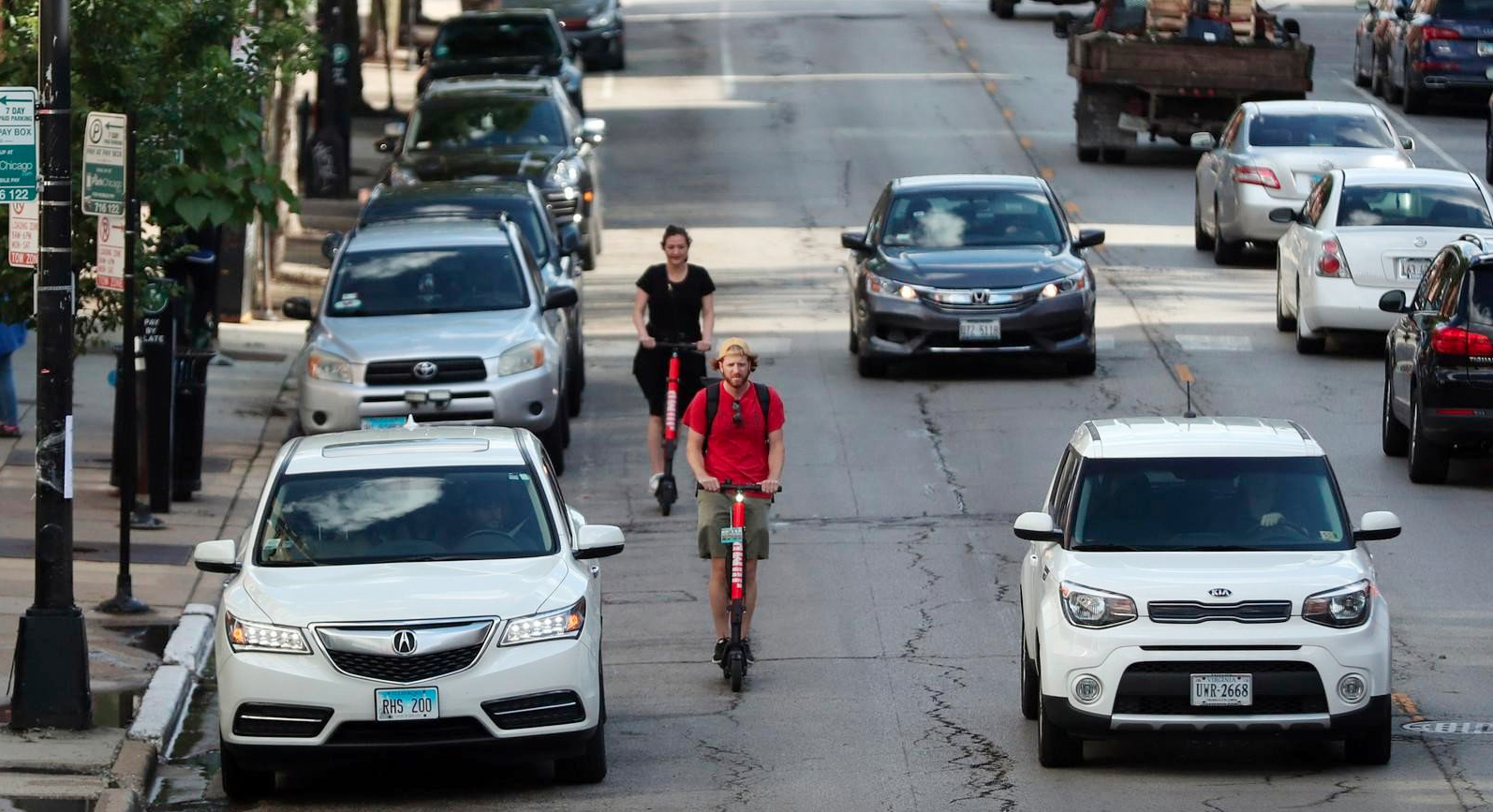If the coverage surrounding Chicago's scooter-sharing pilot is any indication, the apocalypse is upon us.
“Scooters are all over the place at Chicago and Milwaukee,” warned ABC-7 reporter Jason Knowles in a recent segment. At one point, he counted five (5) of the app-controlled vehicles parked on the sidewalk at the West Town intersection — “scooter litter,” he deemed them.
But take the mania with a grain of salt. The internet's proclivity for dumping on the techy devices can obscure the possibility that, as one local Twitter account puts it, Chicago Scooters Are Fine.
Sure, they look like newfangled Razor kick-scooters. But these grown-up versions are sturdier, with kickstands and electric throttles that let riders zip around at 15 miles an hour. (Through trial and error, I learned that between ten and 12 miles an hour is a more reasonable cruising speed).
There’s a reason the dockless scooters have caught on quicker than Divvy, too: They better solve the “first and last mile” conundrum. To get to the nearest L stop from my apartment in Pilsen, it's a 25-minute walk, a $5 Lyft ride, or a five-minute walk to a Divvy station followed by a ten-minute bike ride. On a scooter, I get to the Blue Line in 10 minutes for $3.
The scooters are also fun as hell, especially compared to other means of commuting. In Chicago, driving means inching through traffic on I-90 as you choke on exhaust. Uber and Lyft is way too expensive to use daily. And the bus can be nearly as slow as walking.
On a thin, lightweight scooter, you barely feel like you’re using a vehicle at all. Weeks later, I still feel a dash of adrenaline every time I flick the throttle. It's like riding a grounded version of Michael J. Fox’s hover board in Back to the Future 2.
The scooters, of course, are not perfect. There are way too many companies involved in the pilot, each with its own smartphone app and silly name. Between Bird, Bolt, Gruv, Jump, Lime, Lyft, Sherpa, Spin, VeoRide, and Wheels, there are half as many scooter brands in Chicago as there are candidates vying for the Democratic nomination.
Scooterers are making all sorts of annoying mistakes right now, too — namely riding on the sidewalks, and leaving scooters parked in the middle of them. Scooters have led to wrecks, injuries, and angry pedestrians and drivers. (Drivers, of course, break the rules too — by speeding, running reds, or blowing by pedestrians in crosswalks. There have been 152 fatal car crashes in Cook County this year alone.)
The good news: One-third of scooter-related accidents occur during a user’s first ride, and another 30 percent involve those who’ve taken fewer than 10 rides, according to a CDC report using data from Austin, Texas. If the city adds new mobility lanes to accommodate scooter traffic, that number will likely plummet.
That doesn't mean infringing on bike lanes, either. Cyclists have a right to be peeved at the clueless bros zipping around on kids’ toys in the lanes they've spent decades fighting for. Scooter and bike traffic is an uneasy pairing; scooters accelerate too quickly, coast too slowly, and are too unpredictable in bike lanes.
But rather than barring scooters from their sliver of road, cyclists could build solidarity with them. After all, a study out of Portland found that 34 percent of scooter rides replaced trips that would've been otherwise taken by car.
For all those people commuting without a car — on scooters, bikes, skateboards, whatever — this is an opportunity to build a larger constituency vying for extra space in our streets. Cars have only ruled for about a hundred years. Before that, roads were built for horses, carriages, bikes, and pedestrians.
Big picture, the so-called micro-mobility movement isn't going anywhere. Paired with programs like bikeshare, electric scooters are a cheap way for cities to expand public transit, cut carbon emissions, and diversify our transportation grid beyond the automobile.
So please, everyone, put down your pitchforks. What we need is smart scooter regulation and a little patience.




